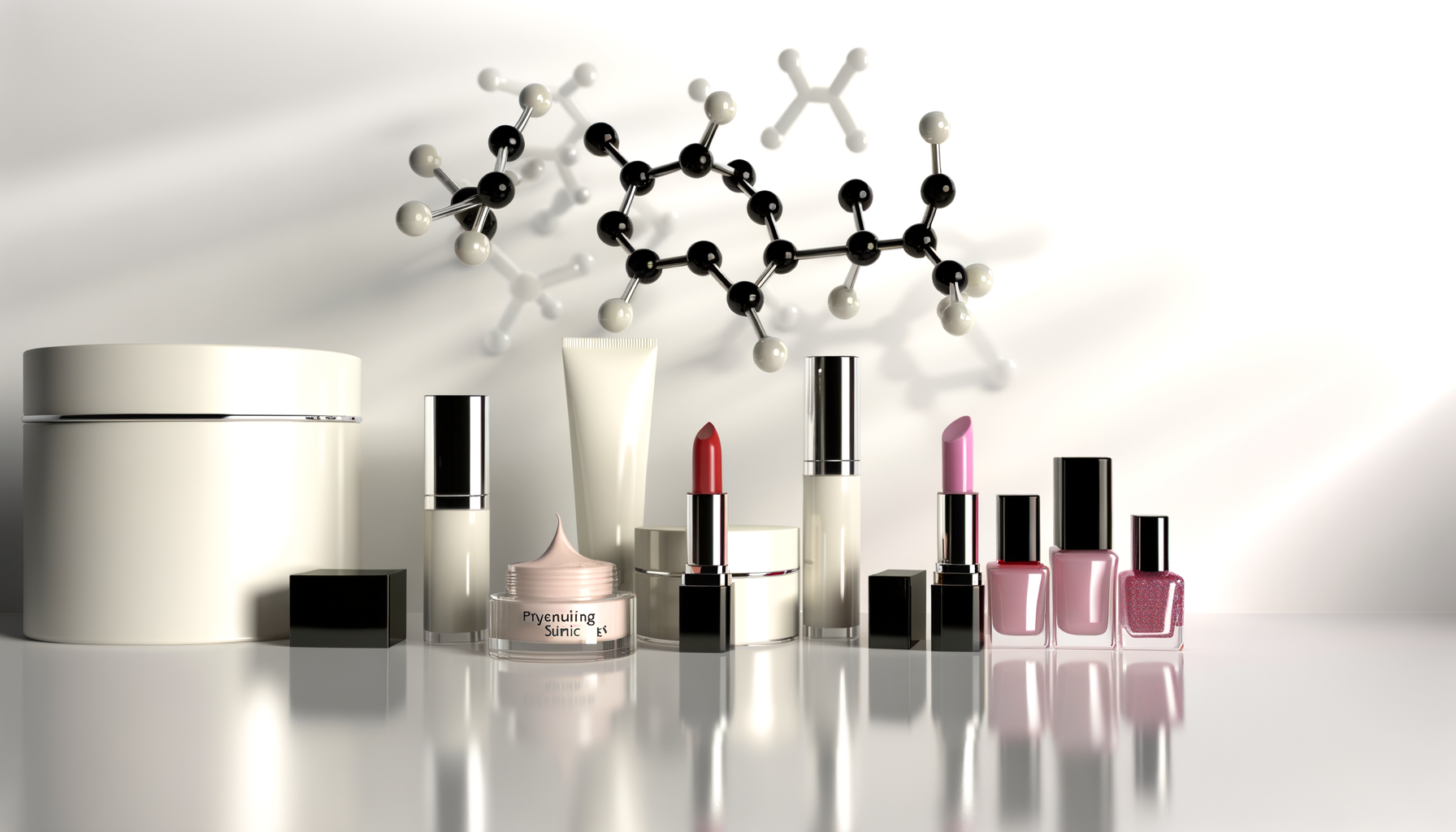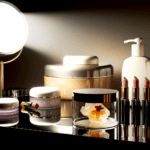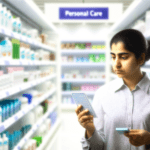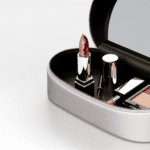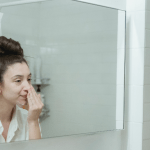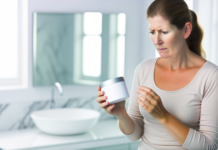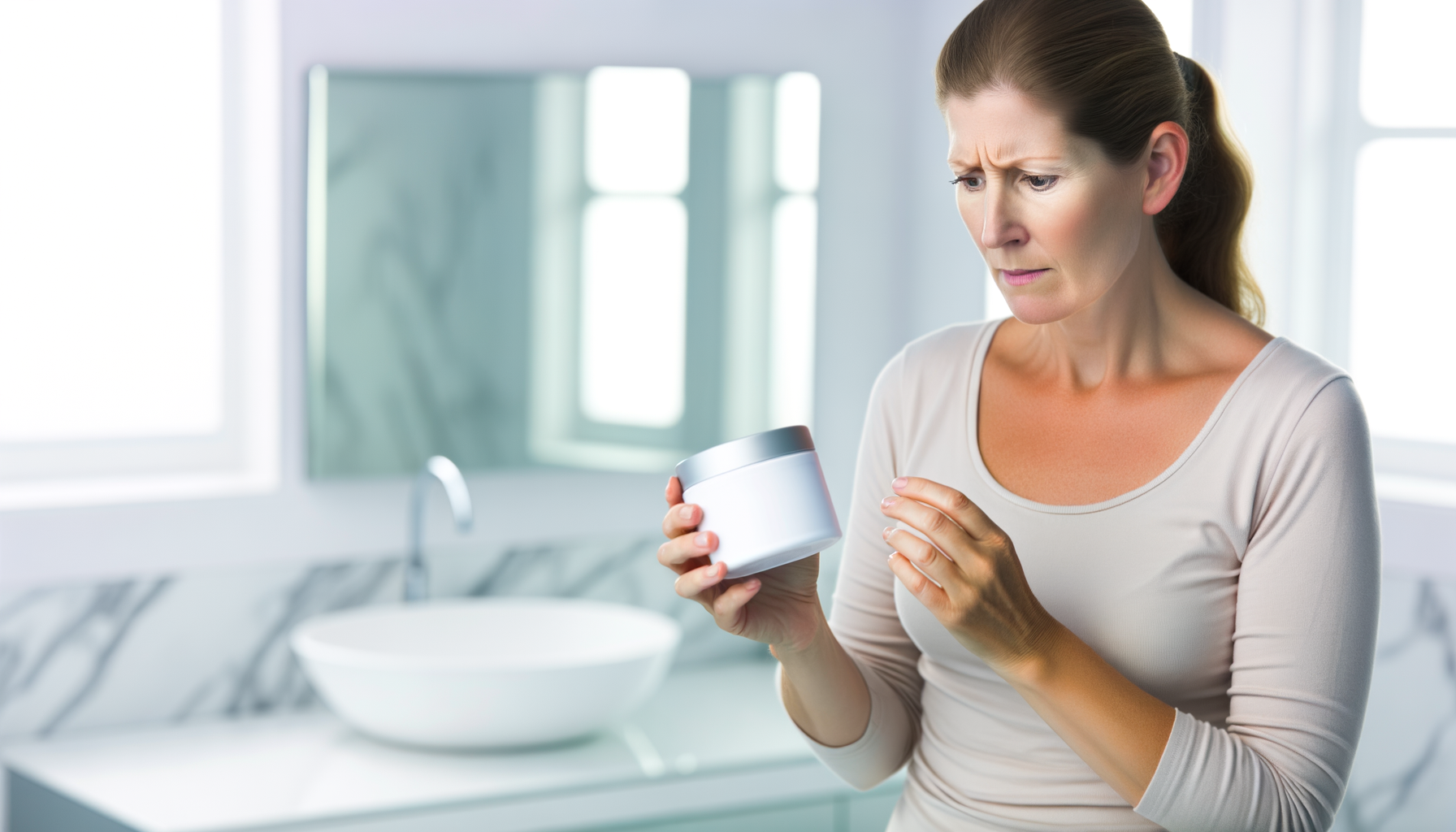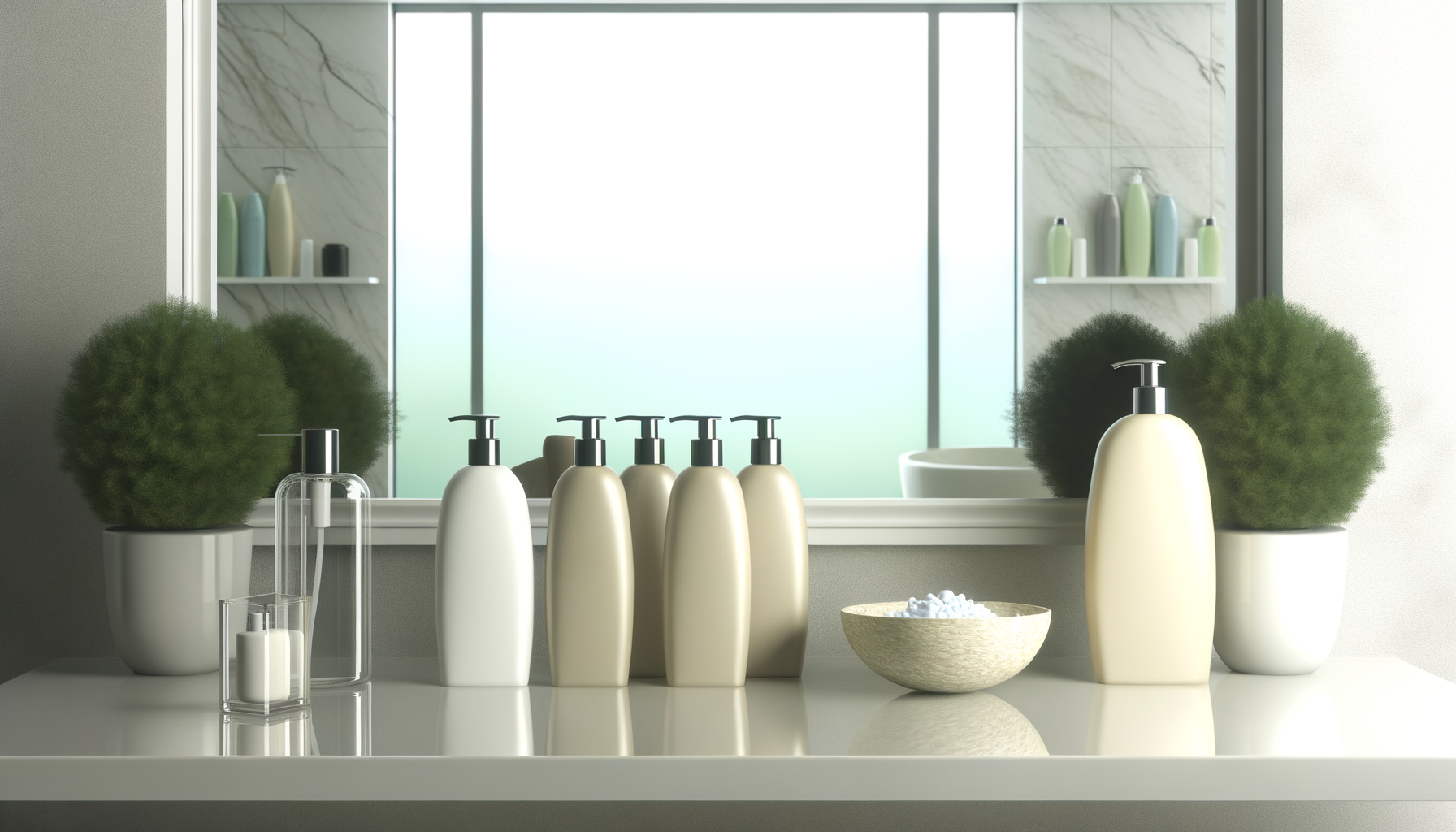Introduction to Phthalates
What Are Phthalates?
Phthalates, pronounced “thal-ates,” are a group of chemical compounds that are widely used as plasticizers—substances added to plastics to increase their flexibility, transparency, durability, and longevity. These oily, colorless liquids are produced in billions of pounds annually and are a key component in a vast array of products, from vinyl flooring to food packaging, and even in personal care items.
Common Uses of Phthalates
Phthalates are not just limited to industrial applications; they are prevalent in many household items. They are found in products such as vinyl flooring, lubricating oils, and solvents. In the realm of personal care, phthalates are often used to help lotions penetrate and soften the skin, and to make fragrances last longer. Their versatility makes them a staple in the manufacturing world, despite growing concerns about their safety.
Phthalates in Cosmetics: A Hidden Danger
One of the less obvious but highly concerning areas where phthalates are used is in the cosmetics industry. These chemicals can be found in items ranging from nail polishes and hair sprays to shampoos and perfumes. Phthalates are often hidden under the term “fragrance” on ingredient labels, a proprietary loophole that allows manufacturers to avoid disclosing the specific chemicals used in the scent. This lack of transparency makes it challenging for consumers to identify and avoid products containing phthalates.
Why Should You Be Concerned?
The concern over phthalates stems from their potential as endocrine disruptors—chemicals that can interfere with hormonal systems. These disruptions can lead to a host of health issues, including reproductive problems, hormonal imbalances, and increased risk of certain cancers. Infants and young children are particularly vulnerable due to their developing bodies and the potential for lifelong impact. Moreover, the cumulative effect of daily, chronic exposure to phthalates from multiple sources is not fully understood, raising questions about the long-term consequences of their pervasive use.
While the cosmetic industry and regulatory agencies maintain that the levels of phthalates used in products are safe, consumer advocacy groups and some scientific studies suggest otherwise. The debate over the safety of phthalates in cosmetics is ongoing, with calls for more stringent regulations and transparent labeling practices. As consumers become more aware of the potential risks, the demand for phthalate-free products is growing, leading to a shift in the market towards safer alternatives.
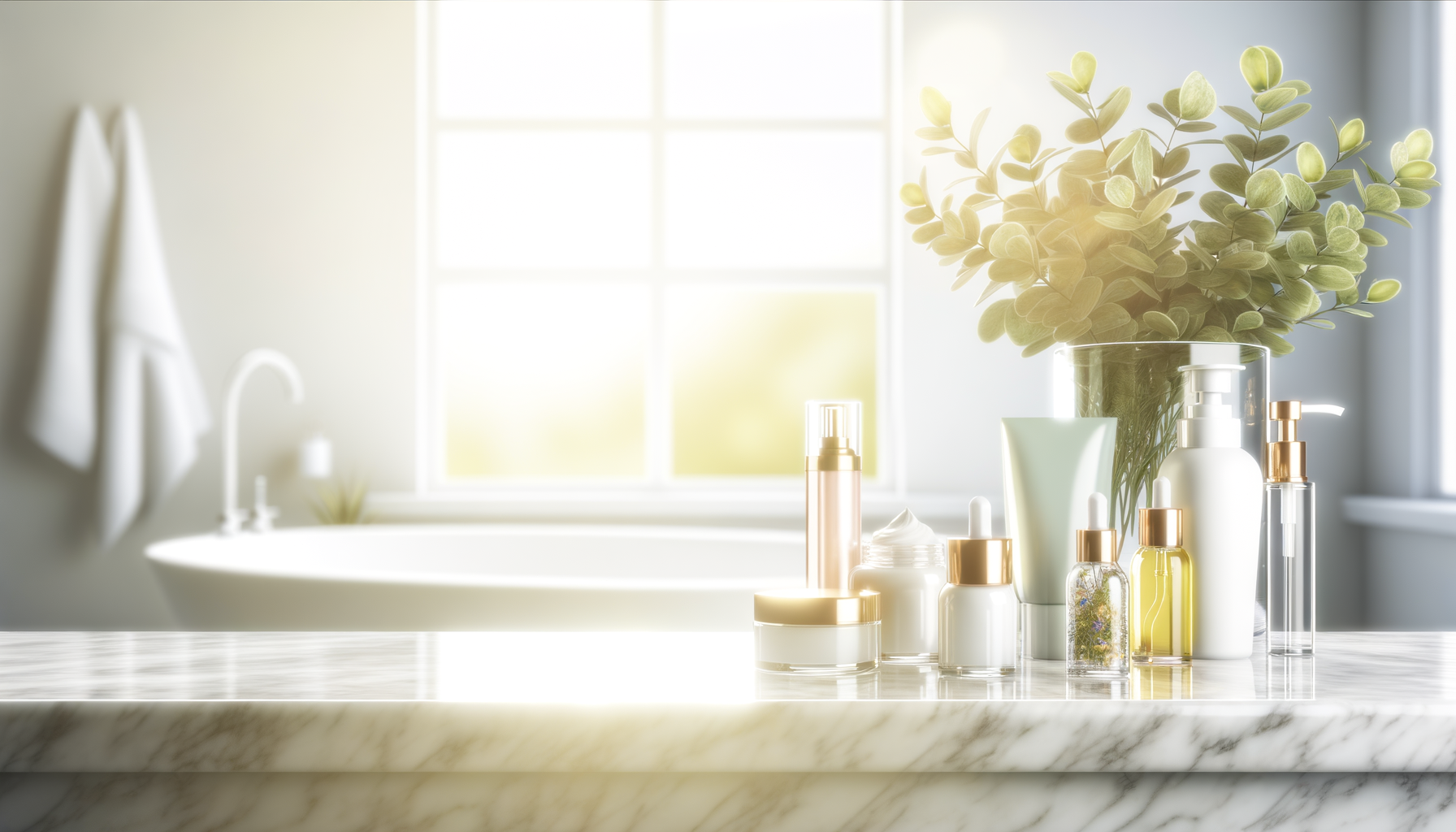
Popular Read: Endocrine Disruptors in Skincare: What You Need to Know
The Health Impacts of Phthalates
Endocrine Disruption and Hormonal Imbalance
Phthalates are a group of chemicals known for their ability to interfere with the endocrine system, which regulates the body’s hormones. Hormones operate at extremely low concentrations, akin to a fraction of a teaspoon in an Olympic-sized swimming pool. Any alteration in this delicate balance can lead to significant health issues. Phthalates mimic natural hormones, particularly estrogen, which can lead to hormonal imbalances and disrupt normal bodily functions. This disruption can have widespread effects, including developmental, reproductive, and metabolic problems.
Links to Breast Cancer and Reproductive Issues
Several studies have raised concerns about the potential link between phthalates and breast cancer. Phthalates’ ability to mimic estrogen means they can potentially influence the growth of estrogen-sensitive breast cancer cells. Additionally, phthalates have been associated with reproductive issues. Exposure to these chemicals has been linked to adverse outcomes such as reduced sperm count, genital malformations, and issues with fertility. Pregnant women and their developing fetuses are particularly vulnerable, as phthalates can cross the placenta and may lead to developmental and reproductive toxicity.
Effects on Aging and Menopause
Phthalates may also play a role in the aging process, particularly in relation to menopause. By disrupting hormone levels, phthalates can potentially influence the timing of menopause and exacerbate symptoms such as hot flashes and osteoporosis. The impact on hormonal health can also lead to premature aging, affecting skin elasticity and overall skin health.
Other Potential Health Risks
Beyond the reproductive and hormonal health risks, phthalates pose other potential health concerns. They have been implicated in contributing to obesity and type 2 diabetes, as they may act as “obesogens,” promoting fat accumulation. Additionally, there is evidence to suggest that phthalates may exacerbate asthma and respiratory issues, particularly in individuals with prolonged exposure, such as nail salon workers. The cumulative effect of daily exposure to multiple products containing phthalates can lead to an increased risk of these and other health issues over time.
Given the potential for significant health impacts, it is crucial for consumers to be aware of the presence of phthalates in cosmetics and other personal care products. While research continues to uncover the full extent of the risks associated with phthalates, taking steps to minimize exposure can contribute to better health outcomes.
Identifying Phthalates in Your Cosmetics
Reading Labels: Hidden Names for Phthalates
Uncovering the presence of phthalates in cosmetics can be a challenge, as they are often hidden under various names on product labels. Phthalates may not be listed directly but can be found under acronyms such as DBP (Dibutyl phthalate) in nail polishes, DEP (Diethyl phthalate) in personal care products, and others like BBP, DEHP, DiDP, DiNP, DnHP, and DnOP. Additionally, phthalates can be part of the “fragrance” or “parfum” in a product, which manufacturers are not required to disclose due to trade secret laws. To avoid these hidden dangers, consumers should look for products labeled as “phthalate-free” and be wary of the term “fragrance” or recycling codes that include the number three, or the letters “V” and “PVC”.
High-Risk Cosmetic Products
Some cosmetic products pose a higher risk of containing phthalates due to their nature or application. Products such as nail polish, hair sprays, perfumes, lotions, and moisturizers are more likely to contain these chemicals. Phthalates are used to increase the flexibility of nail polish, help fragrances last longer, and enhance the penetration of lotions. It’s crucial to scrutinize these products closely when assessing their safety.
Regulations and Labeling Loopholes
Despite the known risks associated with phthalates, regulations can be inconsistent and sometimes insufficient. In the United States, the FDA does not require phthalates to be listed separately on cosmetic labels if they are part of a fragrance. This loophole means consumers may unknowingly apply products containing phthalates. In contrast, the European Union has stricter regulations, banning several types of phthalates in cosmetics. Consumers must remain vigilant and support initiatives aimed at tightening industry standards for safer beauty products.
When in doubt, opting for products with fewer ingredients and those that are transparent about their formulations can help minimize the risk of phthalate exposure.

Do you have the most commonly used but toxic, disease bringing chemicals in your skin care? Many chemicals in skincare are hormone disruptors and make menopause symptoms worse.
Find out more…
The Debate Over Phthalates
Industry Arguments for Phthalate Safety
The cosmetic industry often argues that phthalates are safe for use in personal care products. They point to the long history of phthalate use and the lack of concrete evidence directly linking low-level exposure to serious health issues in humans. Industry representatives highlight that phthalates are used in very small quantities in cosmetics and are subject to safety assessments by regulatory bodies. They also emphasize that phthalates help to dissolve other ingredients and fix fragrances, playing a crucial role in the quality and performance of cosmetics.
Scientific Research and Findings
Scientific research, however, paints a more concerning picture of phthalates. Studies have linked these chemicals to a range of health issues, including endocrine disruption, which can lead to hormonal imbalances and reproductive problems. Research has also suggested a possible connection between phthalates and increased risks of breast cancer, as these chemicals can mimic estrogen in the body. While the industry may argue that the levels of phthalates used in cosmetics are below the thresholds of concern, scientists caution that cumulative exposure from various sources can lead to levels that may be harmful over time.
Regulatory Perspectives and Changes
Regulatory agencies worldwide have differing perspectives on phthalates. In the European Union, for instance, many phthalates are banned from use in cosmetics due to their potential risks. The United States has been slower to regulate, with only a few types of phthalates being restricted. However, there is a growing trend towards stricter regulations and increased transparency in ingredient labeling, driven by consumer demand for safer products and scientific evidence of potential harm.
Consumer Advocacy and Awareness
Consumer advocacy groups have been instrumental in raising awareness about the potential dangers of phthalates in cosmetics. These organizations push for stricter regulations, better labeling, and encourage consumers to choose phthalate-free products. Through education and advocacy, they aim to empower consumers to make informed decisions and reduce their exposure to potentially harmful chemicals. The rise of “clean beauty” movements and the availability of safer alternatives are testaments to the success of these advocacy efforts in influencing both industry practices and consumer behavior.
Natural and Safe Alternatives
Ingredients to Look For
When seeking out safer cosmetics, prioritize water-free products as they can be made without chemicals, which is much better for your skin, your health, and the environment. For moisturization, opt for shea butter, cocoa butter, hyaluoronic acid, and argain oil instead of petrochemicals.
How to Choose Safe Cosmetics
For a safe choice, consider water-free products as they can be produced without harmful chemicals. Products containing water require preservatives such as alcohol, parabens, and other chemicals to inhibit bacterial and microbial growth, as water provides a conducive environment for bacteria. Although water is frequently promoted and linked with “clean” or “pure”, this can be quite deceptive. Water serves as a neutral base, but the safety and effectiveness of a product are determined by the other ingredients: If a product contains water, it must also contain chemical preservatives to prevent the growth of bacteria and fungi. These chemicals are harmful! Therefore, it’s crucial to look past the “water-based” label and scrutinize the complete list of ingredients to recognize and understand the inclusion of harmful chemicals or toxins.
Do you know the three main ways that your body gets in touch with harmful chemicals with everyday products? Knowledge is Power!
The Ultimate Detox Guide will tell you how to lower your exposure to harmful chemicals!

Detoxifying Your Beauty Routine
Steps to Eliminate Phthalates from Your Cosmetics
Phthalates, often hidden under the term “fragrance,” are prevalent in many beauty products. To eliminate them from your cosmetics, start by scrutinizing product labels. Opt for items that explicitly state “phthalate-free.” Additionally, avoid products with generic “fragrance” listed as an ingredient, as this is a common loophole for phthalates. Instead, choose fragrance-free options or those scented with natural essential oils. Remember, your skin absorbs what you put on it, so be as selective with your skincare as you are with your diet.
Detoxification Methods for Your Body
Reducing your body’s phthalate burden involves more than just switching cosmetics. Incorporate detoxifying foods like leafy greens, garlic, and citrus fruits that support liver function. Stay hydrated to help flush out toxins. Consider periodic fasting or a detox program, but always consult with a healthcare professional before starting. Regular exercise also promotes detoxification through sweating, so keep active.
Lifestyle Changes for a Chemical-Free Life
Embrace a holistic approach to a chemical-free life. Transition to natural cleaning products for your home, such as vinegar and baking soda, to reduce overall exposure to harmful chemicals. Store food in glass containers instead of plastic to avoid phthalate leaching. Invest in a water filter to eliminate contaminants from your drinking water. These changes, while small individually, collectively contribute to a significant reduction in your daily chemical exposure. Download a chemical-free protocol here that breast cancer patients are recommended to follow.
Support and Resources for Ongoing Health
Staying informed is crucial for ongoing health. Follow organizations like the Environmental Working Group (EWG) for updates on safe cosmetics and household products. Join online communities that share tips and experiences on living a toxin-free life. Consider consulting with a naturopath or a holistic health coach who can provide personalized advice and support. Remember, the journey to a toxin-free lifestyle is ongoing, and community support can be invaluable.
Conclusion: Detoxifying your beauty routine is a step towards a healthier life and environment. By being vigilant about product ingredients, making lifestyle adjustments, and seeking support, you can significantly reduce your exposure to phthalates and other harmful chemicals. Empower yourself with knowledge, and take control of your health and beauty.
Do you know the 3 main ways how your body is exposed to harmful chemicals, which affect your hormones, your thyroid, health and beauty?
If not, it may be time to learn about them. It takes about 1-2 minutes.
We have a few suggestions how to avoid these silent health and immune system killers in our new guide.
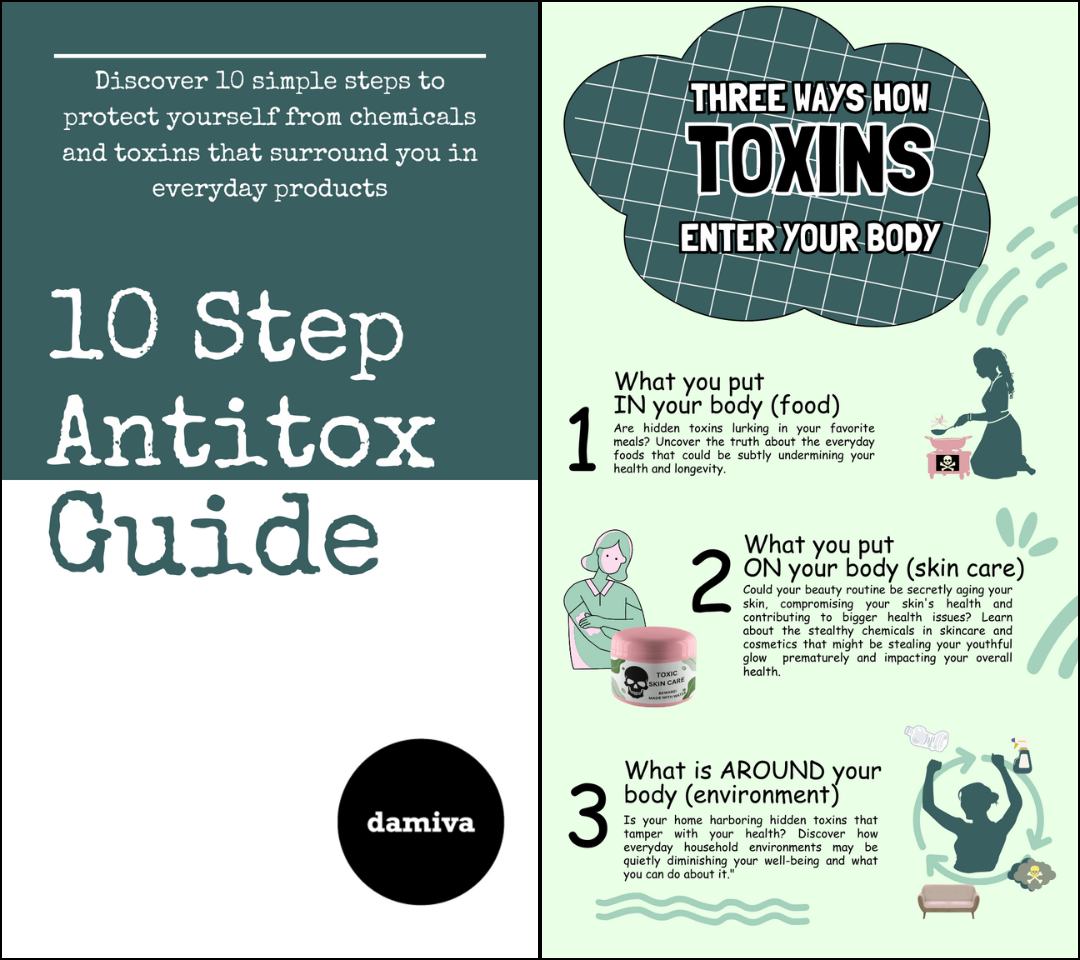
Conclusion: Empowerment Through Knowledge
Summarizing the Risks of Phthalates
Throughout this article, we have delved into the concerning world of phthalates in cosmetics, uncovering the hidden dangers these chemicals pose to our health. Phthalates, commonly used as plasticizers and solvents in a myriad of beauty products, have been linked to a range of health issues, including endocrine disruption, hormonal imbalances, and increased risks of breast cancer and reproductive problems. The evidence presented underscores the insidious nature of these substances, which can lurk unnoticed in our daily beauty routines.
The Importance of Informed Choices
Armed with the knowledge of the potential hazards associated with phthalates, consumers are better positioned to make informed choices about the cosmetics they use. It is crucial to scrutinize product labels, understand the implications of the ingredients listed, and seek out safer alternatives. By doing so, individuals can exert control over their exposure to harmful chemicals and take proactive steps to safeguard their health.
Taking Charge of Your Health and Beauty
Taking charge of your health and beauty means more than just selecting the right shade of lipstick or the perfect moisturizer. It involves a deeper understanding of the products we use and their long-term effects on our bodies. By choosing phthalate-free cosmetics and supporting brands that prioritize safety and transparency, consumers can drive demand for healthier beauty options and encourage industry-wide change.
Continuing the Conversation on Safe Cosmetics
The conversation on safe cosmetics does not end here. It is an ongoing dialogue that requires continuous education, advocacy, and collective action. Consumers, industry professionals, and regulatory bodies must work together to ensure that the beauty products available on the market are not only effective but also free from harmful chemicals like phthalates. By continuing to raise awareness and push for stricter regulations, we can strive for a future where beauty and health are not at odds.
In conclusion, the empowerment gained through knowledge about phthalates and their risks enables us to make better choices for our health and beauty. By staying informed, advocating for safer products, and supporting responsible brands, we can protect ourselves and future generations from the hidden dangers in cosmetics. Let us continue to champion the cause for safe and healthy beauty standards.
